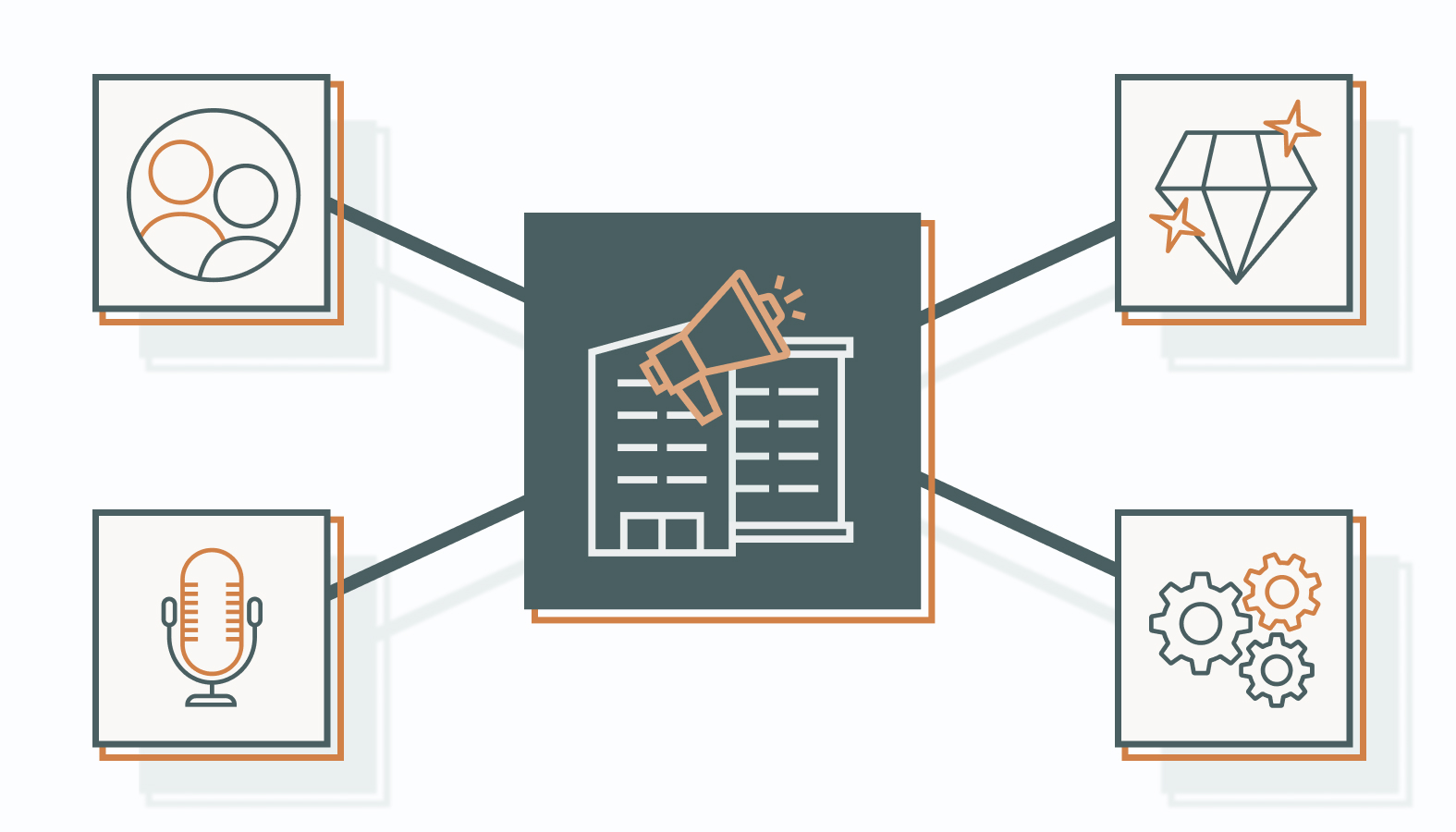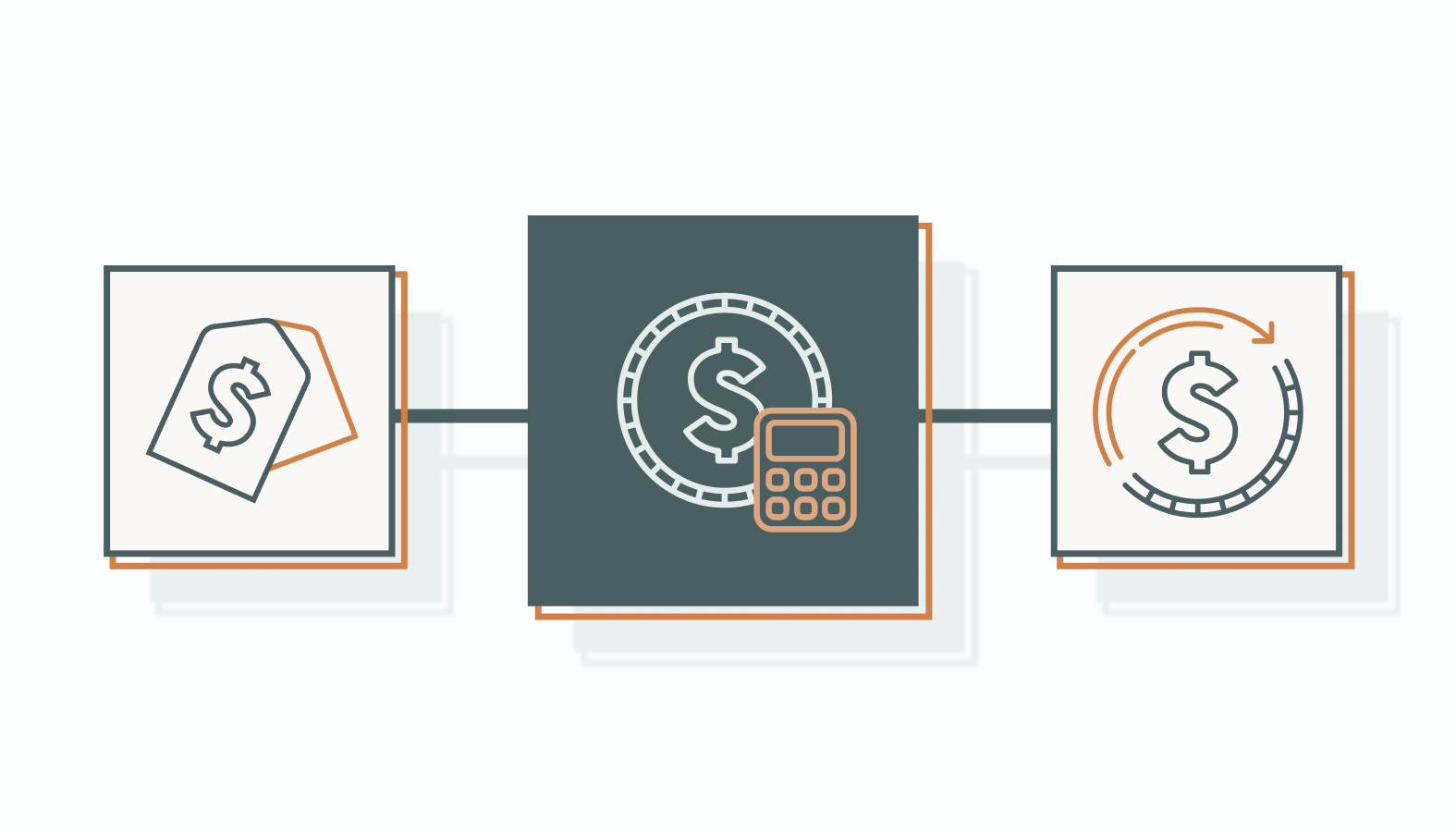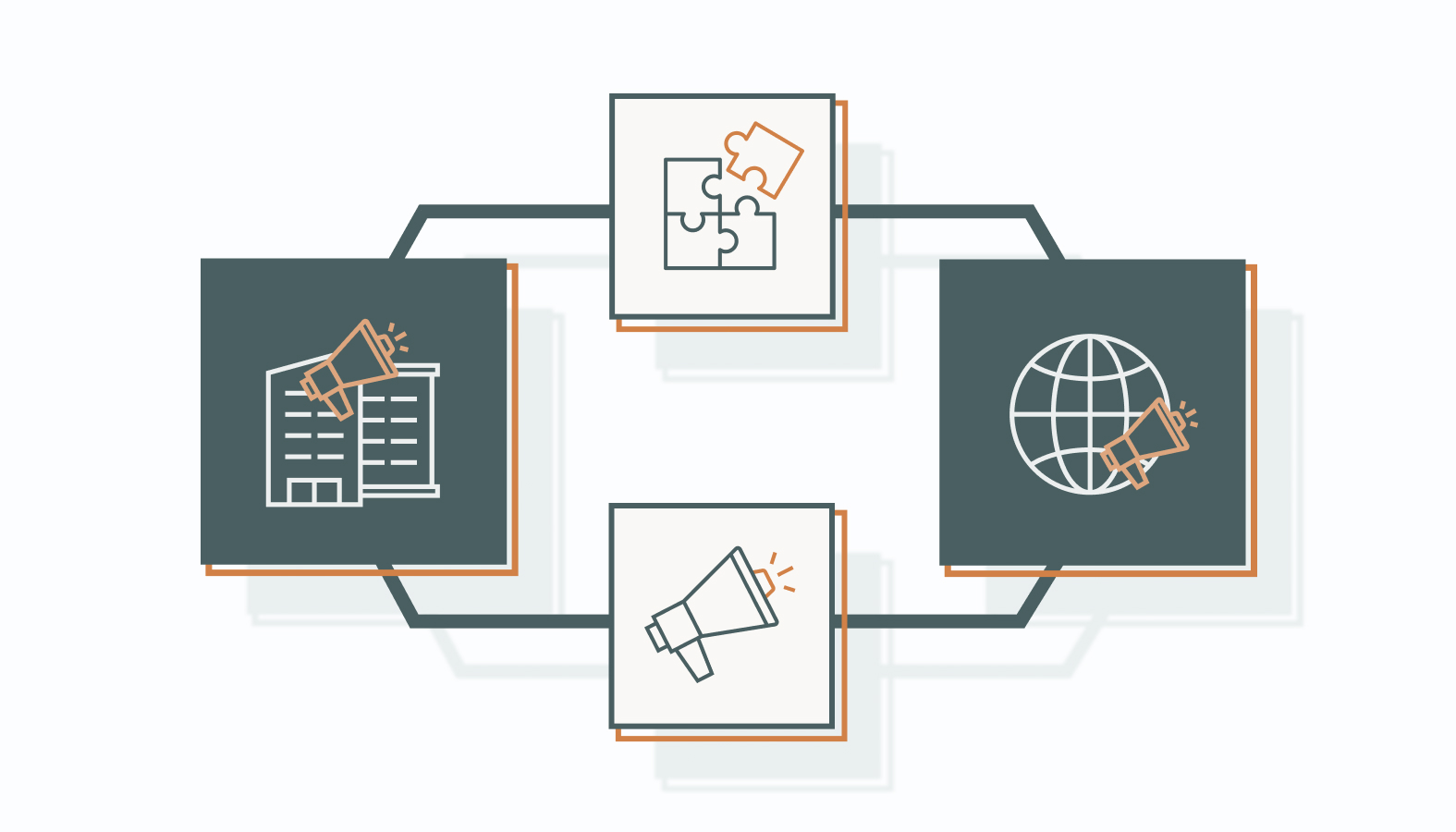Struggling to decide whether to build your dream marketing team or outsource to the experts?
You’re not alone. Many businesses wrestled with this dilemma.
On the one hand, an in-house crew offers deep brand understanding and flexibility. On the other, agencies bring a wealth of experience and specialized skills.
So, how do you choose a suitable marketing model that fits your needs?
In this post, we’ll explore the pros and cons of in-house marketing teams and outsourced agencies. We’ll also break down the challenges of each approach, helping you choose the best fit for launching your brand to the top.
Understanding In-House Marketing
Selecting an in-house marketing team or outsourcing can significantly impact how your company executes strategies and achieves campaign success.
Businesses choose in-house marketing for several advantages, but this path also presents challenges that could limit the marketing strategy’s scope and depth.
Building an In-House Team: Pros and Cons
Building an in-house marketing team offers both advantages and disadvantages.
Pros:
- Stronger Control: In-house teams allow for closer supervision and quicker decisions. This level of control ensures consistent messaging across campaigns and faster response to market shifts or internal needs.
- Brand Affinity: Employees immersed in the company culture inherently understand the brand’s story, values, and vision. This translates into marketing materials that better reflect the brand identity.
- Cultural Alignment: In-house teams naturally align with the company culture and long-term goals, fostering collaboration and fueling innovation.
Cons:
- Cost Considerations: Building and maintaining an in-house team is expensive. Salary, benefits, and training costs add up.
- Limited Expertise: Smaller companies might lack the resources to cover all modern marketing aspects. This lack of bandwidth can lead to gaps in strategy or strain on existing staff.
- Scalability Challenges: Scaling an in-house team to meet growing demand can be slow and resource-draining compared to the flexibility outsourcing brings to the table.
Essential Elements of an In-House Marketing Team
Here’s a breakdown of the core roles needed for a successful in-house marketing team:
- Strategy & Planning: Marketing strategists and managers craft, execute, and oversee the overall marketing roadmap.
- Creative Development: Graphic designers, writers, and content creators to produce engaging materials that align with the brand.
- Digital Marketing Experts: SEO (search engine optimization) specialists, social media managers, and digital ad specialists to manage the company’s online presence and campaigns.
- Data Analytics: Analysts translate data into actionable insights that guide decision-making and measure campaign performance.
Cultivating a Cohesive Brand Voice
In-house marketing excels at building a consistent brand voice. They ensure all messaging, from social media to press releases, reflects the brand’s personality.
Regular team training on brand voice guidelines and central oversight by a dedicated manager further solidify this consistency.
Integration with Business Operations
In-house marketing teams link strongly to a company’s core operations, fostering informed decision-making and agility.
Stronger Collaboration: Closer collaboration with sales, product development, and customer service leads to marketing strategies that support overall business goals.
Faster Response: Being part of the internal team allows for quicker adjustments to marketing strategies based on real-time feedback and market changes.
Deeper Insights: Regular interaction with other departments provides a richer understanding of company challenges and opportunities, enabling more targeted marketing efforts.
Understanding these benefits can help companies assess if an in-house marketing model better fits their strategic goals and operational structure.
Outsourced Marketing: A World of Expertise
Outsourcing lets you tap a worldwide pool of marketing experts, expanding your capabilities without a massive hiring spree. It’s like hiring a ninja squad instead of training one from scratch.
The Advantages of Outsourcing
Outsourcing marketing offers a compelling way to grow and streamline your marketing efforts.
- Specialized Talent: Access top-tier marketing professionals with deep industry experience and specialized skills (SEO, content creation, digital ads). Having access to specialized talent ensures that your team can execute campaigns efficiently.
- Scalability: Outsourcing is ideal for campaigns needing quick adaptation. Aside from avoiding the complexities and costs of hiring and training new staff, this route allows your company to quickly scale your marketing efforts up or down based on current needs.
- Fresh Ideas: External agencies bring unbiased perspectives that can reinvigorate your marketing strategy. They offer innovative ideas and creative solutions you might miss with internal teams used to traditional approaches.
Considering the Drawbacks of Outsourcing
Outsourcing has advantages, but consider these potential drawbacks:
- Reduced Control: Outsourcing can mean less control over marketing. Decisions may take longer due to communication needs, and alignment with company goals might be challenging.
- Communication Hurdles: Effective communication is crucial, but time zones, cultures, languages, and communication styles can create challenges. Misunderstandings or delays can hurt marketing efforts and efficiency.
- Data Security Concerns: Outsourcing involves sharing sensitive information with external partners. Companies need robust data protection measures and trusted partners.
Types of Outsourced Marketing Services
Businesses can outsource various marketing services to achieve their goals. Here are the most common services:
- Creative & Branding: Graphic design, content creation, and brand development for high-quality, targeted marketing materials.
- Digital Marketing: SEO, social media, PPC ads, and email marketing – specialized areas requiring constant adaptation.
- Advertising & Media: Media buying, campaign management, and ad creation with better rates and placements through established agency relationships.
- Market Research & Data Analytics: Advanced research, competitor analysis, and data insights for data-driven decisions and strategic refinement.
- PR & Communication: Public relations, crisis communication, and media relations for enhanced public image and crisis management.
- Direct & Performance Marketing: Measurable results through direct mail, telemarketing, and performance-based marketing strategies.
- Niche Services: Influencer marketing, event management, or multilingual campaigns handled by specialized agencies for unique needs.
Communication and Partnership
Success with outsourced marketing relies on clear communication and a strong partnership.
- Talk it Out: Open communication keeps everyone on the same page and allows for smooth collaboration. Timely updates ensure coordinated marketing efforts.
- Goals & Expectations: Align objectives, deliverables, and timelines from the start to ensure that all efforts target the same goals.
- Track and Adapt: Regularly assess performance and provide feedback, which keeps the strategy on track and drives improvement.
- Define & Empower: Clear roles avoid confusion. Empowering the agency within their area fosters trust and accountability.
- Contracts & Culture: A solid contract protects both sides while aligning cultural values enhances partnership effectiveness.
Once they master these elements, companies can leverage external expertise to strengthen their internal marketing strategies.
Analyzing Costs and ROI
Before deciding between in-house vs. outsourced marketing, crunch the numbers.
A thorough analysis of costs and potential return on investment (ROI) will help you choose the option that best suits your budget and strategic goals.
In-Depth Cost Comparison
Here are several cost factors to consider:
In-House Marketing Costs:
- Salaries and Benefits: Salaries, benefits (health insurance, retirement), and perks are the most significant ongoing costs.
- Training and Development: Keeping your team sharp with the latest marketing trends and tools adds up over time.
- Technology and Tools: Marketing tools (content creation, analytics, SEO, social media) are essential investments.
- Overhead: Don’t forget office space, utilities, and other operational costs.
Outsourced Marketing Costs:
- Service Fees: Agencies charge for their expertise as a retainer, project fee, or hourly rate.
- Additional Costs: Be prepared for potential add-ons like media buying or ad placements.
- Flexibility: Outsourcing is often cheaper for short-term or variable projects because you avoid the fixed costs of full-time employees.
Cost Comparison:
Scaling up or down? Outsourcing offers flexibility for fluctuating needs and lower upfront costs, which isn’t possible when building an in-house team.
Expertise vs. Predictability: In-house teams require a bigger upfront investment for hiring and training but offer more predictable budgeting. Outsourced services may have variable costs based on project scope and might charge a premium for specialized skills.
Measuring the Return on Investment
Evaluating marketing ROI for both in-house and outsourced structures requires considering the following:
- In-House: KPIs or key performance indicators (lead gen, conversion rates, customer acquisition cost), attribution models to pinpoint valuable activities, long-term brand impact and alignment with business goals, and cost-per-outcome (investment vs. achieved results).
- Outsourced: Specific campaign performance against agency goals, comparisons with industry benchmarks and in-house efforts, the value of outsourced flexibility and agility in campaign execution, and efficiency/effectiveness in delivering desired outcomes within timeframes.
Unified Marketing ROI
Businesses should leverage integrated analytics and combine in-house and outsourced data for a complete ROI picture.
Regular performance reviews ensure the strategic alignment and effectiveness of each model. Establishing clear, measurable KPIs holds both internal and external teams accountable.
This structured cost-ROI analysis helps companies pick the most financially sound and performance-driven marketing approach.
Speed, Scale, and Flexibility in Marketing
Marketing today demands speed, scale, and agility. In-house and outsourced models offer advantages in these areas but come with trade-offs.
Responsiveness to Market Changes
In-house marketing teams win on agility. Embedded within the company, they react quickly to market shifts and adjust campaigns or messaging on the fly. Immediate feedback loops from colleagues fuel real-time tweaks based on data and internal insights.
However, resource limitations can slow them down – a fully booked team might struggle to handle sudden pivots.
Outsourced marketing teams win on specialized knowledge. Agencies constantly hone their skills and stay on top of trends, allowing them to adapt quickly and implement new strategies effectively. Their external perspective brings fresh ideas to tackle market challenges.
However, coordination hurdles such as time zone differences can cause delays when implementing changes and affect responsiveness.
Scaling Your Marketing Efforts
Building Your In-house Team: Scaling an in-house team requires time and money for hiring, training, and tech, which can make rapid growth challenging.
The upside? Knowledge stays in-house, fostering brand understanding and long-term alignment. But fixed costs like salaries and limited space can strain budgets.
Partnering with Agencies: Outsourcing offers more flexibility to scale efforts quickly.
Agencies can allocate resources or specialists as needed, bypassing internal hiring delays.
It’s also cost-effective because you only pay for what you use instead of the fixed costs of an in-house team.
Plus, agencies have a wider talent pool that you can access for various project needs.
Combined Approach: Some companies achieve marketing success with a hybrid model, combining the benefits of in-house and outsourced marketing models.
This approach lets them maintain a core in-house team for brand consistency while outsourcing specialized tasks or peak workloads to agencies.
The Hybrid Approach: Best of Both Worlds?
Many companies adopt a hybrid approach to maximize marketing effectiveness, optimize responsiveness, or significantly scale marketing efforts.
Ideally, the in-house team focuses on long-term brand development, while outsourced partners handle dynamic, short-term projects.
Combining In-House and Outsourced Marketing
The hybrid approach offers flexibility, specialized expertise, brand control, and familiarity.
Here’s how it works:
- Core Brand Management: An in-house team oversees core brand strategy, ensuring marketing messaging consistently aligns with the company’s mission, brand culture, and long-term goals.
- Specialized Expertise: Marketing agencies offer a targeted solution. They bring specific skills and cutting-edge technology in SEO, PPC, creative content development, and data analytics. This targeted approach allows companies to access capabilities that might be expensive or impractical to develop and maintain in-house.
- Flexibility and Scale: The model allows for scaling marketing efforts up or down as needed. The in-house team manages day-to-day marketing, while agencies can be engaged for specific campaigns.
- Fresh Perspectives: External partners can introduce innovative ideas, preventing an in-house team from stagnating. Fresh eyes can spark creativity and new approaches to marketing challenges.
- Resource Optimization: Strategic task allocation optimizes resources. In-house teams focus on long-term strategy and brand coherence, while agencies handle specialized or time-intensive projects.
The beauty of a hybrid approach is that you have total control over combining in-house capabilities and outsourced functions.
Successful Hybrid Marketing Models
Big brands leverage hybrid marketing for success.
Coca-Cola maintains its core brand strategy in-house but partners with agencies for regional activations.
Apple controls product launches and brand messaging internally while collaborating with specialists for digital ads and market research.
HubSpot manages content and inbound marketing in-house but taps external agencies for video production and international campaigns.
These examples show how combining in-house control with external expertise allows companies to maintain brand identity, adapt to local markets, and access innovative solutions.
Empowering Your Marketing Choice
In-house, outsourced, or a hybrid approach? This article compares the three marketing options.
In-house marketing offers control and brand familiarity but can be costly and resource-intensive.
Outsourcing provides access to specialists and scalability but may lead to control loss or communication challenges.
A hybrid approach balances resources, flexibility, and internal/external strengths.
Ultimately, understanding these options helps you build the best marketing strategy for your company.
Outsource Your Marketing Success with Top Talent
Choosing in-house or outsourced marketing is a big call. We hope this guide empowered you to make an informed decision based on your goals and resources.
Whether you’re leaning towards building an in-house team, considering outsourcing, or even contemplating a hybrid approach, we recommend carefully weighing the pros and cons. But if you need more guidance, we’re here to help.
We invite you to schedule a candid conversation with one of our experts. » Discuss your situation, ask questions, and get personalized insights – no pressure to commit.
Let’s talk about how we can support your marketing and business goals. We’d love to connect and help you choose the best path for your company.










